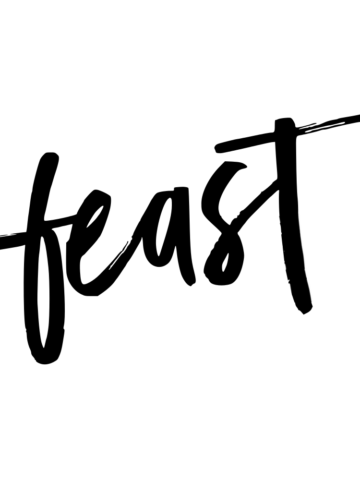If you've historically used just the themes without the Feast Plugin, we hope to clarify what the Feast Plugin provides relative to the individual themes.
- Check out the Getting Started guide for guidance on what setup works best for you
- See the migration guide for requirements
- follow the Feast Plugin Setup guide if you want to do it yourself
We recommend all sites use the Feast Plugin from day 1 if funds allow it, however, brand new sites operating on a budget won't be negatively impacted by using the classic theme setup for the first 12 months, because it generally takes 9+ months to get out of the Google sandbox and many months for new posts to rank
Here's what you need to know:
- the theme setup without the Feast Plugin will now be known as the "Classic" theme, eg. Foodie Pro Classic, Brunch Pro Classic, Cook'd Pro Classic, Cravings Pro Classic and Seasoned Pro Classic
- the classic themes are suitable for sites in their first 12 months, where generating 100 high quality recipes is the most important factor
- after the first 12 months (100 recipes), the Feast Plugin contains optimizations and enhancements necessary to be competitive and all sites older than 12 months should upgrade to the Feast Plugin
This change is driven by the fact that themes should only ever be used for styling, and not functionality. Functionality requires heavy investment to keep up with changes in SEO, pagespeed optimizations, accessibility, user experience, browsers, PHP, WordPress and more. This investment can only be covered through a yearly subscription, and should be delivered through a plugin.
However, in the first 12-months/100-posts, a fully optimized site won't help drive traffic because the site is too new to qualify for any traffic at all. Only after a site has gained some momentum does the Feast Plugin really offer tangible benefits.
Jump to:
Introducing the classic themes
The "Classic" themes are simply the original themes, with a few changes:
- the price is now $9, and includes the Genesis framework so that new bloggers can get started on a budget
- there is no support for the classic themes, because support is expensive and $9 does not cover costs, however, the tutorials are 100% and have been followed thousands of times (support is available through the Feast Plugin)
- there are still no refunds because this is a digital product
The decision to drop the price was done because any theme-based setup is now outdated, but still works perfectly fine for new sites because the Feast Plugins optimizations won't provide much benefit until they're further along.
We also want to make it affordable for new sites to get started, with minimal investment. Previously, this meant spending $125+ on the themes alone.
What is the Feast Plugin?
The Feast Plugin has 2 major parts:
- 1-click site tweaks and optimizations
- replacement functionality for the homepage, sidebar, footer, menu and recipe index
The styling is still mainly provided by the theme itself, which is what a theme is meant to do.
By putting the entirely-rewritten modern functionality into the plugin, we can provide tweaks and updates automatically through plugin updates, as changes happen to search engines, WordPress and other plugins.
This has meant significantly less time on updating themes as well as better compatibility with modern best practices instead of running an outdated setup for months or years between theme updates.
Who is the Feast Plugin for?
Everybody!
It's no secret that a few top food blogs and recipe sites dominate recipe searches. This is because they can afford $10,000+ on custom themes, and many times that on yearly maintenance and updates. This high pace of development gives them advantages over everybody else, with insights and optimizations they keep secret.
Our goal at Feast is to outpace those sites, giving you a 5-figure setup at a fraction of the cost, and making this available to everyone instead of just a privileged club.
Instead of closing it off to an elite club who keeps secrets from everybody else, we want to move the entire food blogging community forward - together.
If you're wondering "is this right for my site?", the answer is yes - especially if your site is over 12 months old, or has more than 100 high quality recipes.
Migrate to the Feast Plugin
See our migration guide for what's necessary to get converted over to the Feast Plugin, whether you're currently on a Feast theme or a non-Feast theme.
The Feast Plugin Setup details the recommended order for setting up the plugin and bringing your site up to date.
We also now have the Full Site Conversion White Glove service for sites that prefer to have us tackle the full migration on their behalf.


Leave a Reply